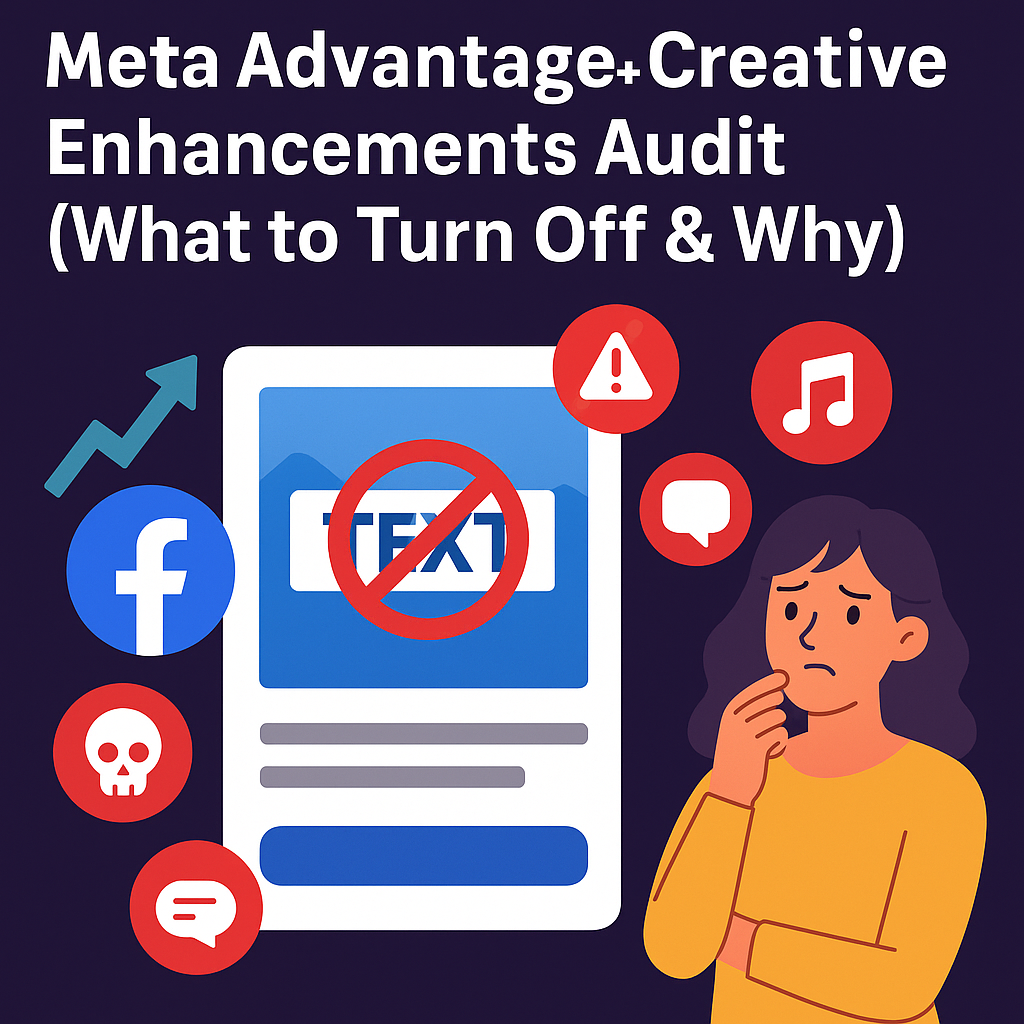Developing a winning creative strategy for DTC brands is essential in today’s competitive market. Building a creative team is a crucial step, but simply assembling talented individuals doesn’t guarantee success. To truly unlock their potential and drive high-converting creatives, you need structure and clarity within your creative process. Many marketers believe in the myth of “creative freedom,” assuming that structure stifles innovation. However, the reality is that unstructured creativity often leads to decreased productivity, missed deadlines, and ambiguous objectives.
This guide will provide DTC brand founders with a practical framework for building and managing high-performing creative teams. By removing ambiguity and fostering a data-driven culture, you can empower your creatives to deliver exceptional results. We’ll focus on establishing structure in three key areas: research, roadmap, and performance, all essential components of a strong DTC marketing strategy.
Table of Contents
1. The Foundation of High-Performing Creatives: Research
Before a single design element is conceived or a captivating tagline is written, thorough research must lay the groundwork for creative success. This is especially crucial for DTC brands, where understanding your target audience, competitive landscape, and what drives online engagement is paramount.
Competitor Research:
Don’t just admire your competitors’ ads – dissect them. Analyze their creative choices, messaging, and the platforms they utilize. Pay close attention to their landing pages, social media content, and overall brand storytelling. Identify patterns and trends in successful campaigns. What visual styles are resonating? What kind of calls to action are they using? By understanding what works for others in your space, you can inform your own creative strategy for DTC brands.
Customer Insights:
Your customers are a goldmine of information. Dive deep into customer reviews, product feedback, and social media conversations. What are their pain points? What language do they use to describe their needs and desires? Tools like sentiment analysis can help you gauge overall customer perception and identify areas for improvement.
Data-Driven Decision-Making:
Embrace the power of data to inform your creative direction. Track key performance indicators (KPIs) for your creative assets, such as website traffic, conversion rates, click-through rates (CTRs), and social media engagement. Analyzing this data reveals what resonates with your audience and what falls flat. Did a particular ad campaign lead to a surge in sales? Did a specific landing page design result in higher conversions? Data provides invaluable insights that can guide your creative team towards creating high-performing assets.
Did you know 90% of consumers read online reviews before visiting a business? (Source: Local Consumer Review Survey 2024: Trends, Behaviors, and Platforms Explored – BrightLocal) This highlights the immense influence of customer feedback on purchasing decisions. By incorporating customer insights into your creative process, you can ensure your messaging aligns with their needs and expectations.

2. Building a Clear Creative Roadmap: Process and Workflow
Imagine launching a new marketing campaign without a clear plan or trying to navigate a complex project without a roadmap. The result? Confusion, missed deadlines, and ultimately, subpar creative output. A well-defined workflow, fueled by comprehensive Standard Operating Procedures (SOPs), is the backbone of any high-performing creative team,
The Creative Project Lifecycle:
Every creative project, whether it’s a social media campaign, a website redesign, or a video production, follows a lifecycle. Formalizing these stages ensures a smooth and efficient process:
- Research: This is where it all begins. Gather customer insights, analyze data, conduct competitor research, and clearly define the project objectives. For DTC brands, this might involve diving deep into customer reviews, analyzing website traffic data, and identifying trends in your niche.
- Ideation: With research as your foundation, brainstorm concepts, explore different creative approaches, and develop detailed briefs that outline the project scope, target audience, and desired outcomes.
- copywriters craft compelling messaging Deep Dive: How to Analyze Creative Performance
- Review: Gather feedback from key stakeholders, iterate on designs, and refine the creative output. This stage is crucial for ensuring alignment and quality control.
- Client Submission (Internal or External): Present the work to internal teams or external clients for approval. Clear communication and well-documented processes are essential for a smooth submission process.
- Launch: Deploy the creative assets across the chosen marketing channels (e.g., social media, website, email marketing).
Standard Operating Procedures (SOPs):
Think of SOPs as your creative team’s playbook. These documented procedures provide step-by-step instructions for each stage of the creative project lifecycle, leaving no room for ambiguity.
- Example SOP: At my agency, we’ve developed a detailed SOP for client presentations. We meticulously track the time spent on research, the number of design variations created, the tools used for gathering data, and the collaborative process between copywriters and designers. We even schedule an automatic “dry run” meeting an hour before every presentation to ensure a smooth delivery. These seemingly small details significantly reduce the team’s mental load, clarify responsibilities, and contribute to a more polished and professional presentation.
By defining clear steps, assigning roles and responsibilities, and documenting these processes in your SOPs, you promote accountability, manage expectations, and prevent the energy drain of uncertainty. This allows your creative team to focus on what they do best: creating.
Improve Creative Team Performance with SOPs:
Implementing SOPs is a key factor in improving creative team performance. By providing a clear framework and reducing ambiguity, you enable your team to:
Reduce stress and uncertainty: Knowing exactly what’s expected at each stage of the process minimizes stress and allows creatives to focus on their craft.
Work more efficiently: Clear processes reduce wasted time and effort, allowing the team to complete projects faster.
Produce higher-quality work: Well-defined steps and quality control checkpoints ensure that the final creative output meets your standards.
Collaborate more effectively: SOPs clarify roles and responsibilities, promoting seamless teamwork and reducing the potential for conflicts.
3. The Power of creative strategy for DTC brands: Aligning with Business Goals
Creative work shouldn’t exist in a vacuum. It needs to be strategically aligned with your overall business objectives. This is where a skilled creative strategist can make all the difference.
The Creative Strategist:
A creative strategist acts as the bridge between your creative vision and your business goals. They are the voice of the customer, the data interpreter, and the creative director’s strategic guide. Here’s how a creative strategist can contribute to your DTC marketing strategy:
- Deep Customer Understanding: They conduct thorough customer research, develop detailed buyer personas, and understand the motivations, needs, and desires of your target audience.
- Competitive Analysis: They analyze the competitive landscape, identify opportunities for your brand to stand out, and ensure your creative approach is differentiated and effective.
- Data-Driven Insights: They examine performance data from past campaigns, extract valuable insights, and use those insights to inform future creative direction.
- Clear Creative Briefs: They translate business objectives into actionable creative briefs, providing the creative team with a clear problem to solve and a strategic framework to guide their work.
By having a dedicated creative strategist, you ensure that your creative team isn’t just generating visually appealing work, but work that drives tangible business results and contributes to your overall DTC marketing strategy.
Studies have shown that brands with a strong creative strategy for DTC brands see an average of 10% higher marketing ROI. (Source: When it Comes to Advertising Effectiveness, What is Key?) Investing in creative strategy for DTC brands is an investment in your brand’s growth and success.

4. Empowering Creativity with Data: Metrics and Reporting
Data isn’t the enemy of creativity; it’s a powerful tool that can elevate creative work from subjective opinion to objective analysis. By fostering a data-driven culture within your creative team, you empower them to make informed decisions, understand the impact of their work, and continuously improve.
Data Literacy for Creatives:
The key to successfully integrating data into the creative process is accessibility and clarity. Instead of overwhelming your team with complex analytics dashboards, focus on presenting key metrics in a visually digestible format. Tools that provide clear visualizations and easy-to-understand reports can be invaluable in this process.
Essential Metrics for DTC Marketing Strategy:
- Primary KPIs: These are the core metrics that directly reflect your business goals. For DTC brands, this typically includes ad spending, cost per purchase, and the number of purchases generated. Tracking these KPIs provides a clear picture of your campaign’s overall effectiveness. Storytelling KPIs: While primary KPIs measure the bottom line, storytelling KPIs reveal how effectively your creative is engaging and retaining your audience. These metrics provide insights into the quality of your creative content and its ability to resonate with viewers. Key storytelling KPIs include:
- Drop-off Rates: This metric shows at what point viewers stop watching your video ads. High drop-off rates may indicate that your creative isn’t captivating enough to hold attention.
- Average Video Watch Time: This measures how long viewers are engaged with your video content. Longer watch times suggest that your creative is compelling and effectively conveying your message.
- Hook and Hold Rates: These metrics assess how quickly your creative grabs attention (hook) and how well it maintains that attention (hold) throughout the duration of the content.
- Click-Through Rates (CTRs): CTRs measure how often viewers click on your ads. High CTRs indicate that your creative is compelling enough to drive action.
Training Your Team:
Making data available is only the first step. You also need to equip your creative team with the skills and knowledge to interpret and utilize that data effectively. Here are some practical strategies:
- Monthly Creative Roadmaps with Daily Communication: Establish a monthly creative roadmap and incorporate daily communication routines to review performance reports together. Encourage team members to actively participate in analyzing the data and provide feedback.
- Dedicated Communication Channels: Utilize platforms like Slack or Basecamp to create dedicated spaces for sharing high-performing and low-performing creatives. Foster open discussions about the data and encourage brainstorming sessions for new ideas based on performance insights.
- Data-Driven Brainstorming: Start every brainstorming session with a KPI download. This helps align the team around the business problem you’re trying to solve and ensures that data is at the forefront of the creative process.
- Bi-Weekly Retrospectives: Conduct regular retrospectives to analyze different ad formats, discuss key metrics, and encourage active participation in reviewing performance reports. This fosters a culture of continuous learning and improvement.
Platforms like Motion offer visual performance reports that are easy for both media buyers and creative teams to understand. By analyzing data from various platforms in a unified dashboard, you increase the likelihood of your team effectively utilizing performance data to improve creative team performance.
Conclusion
Building high-performing creative teams requires more than just assembling a group of talented individuals. It demands structure, clarity, and a data-driven approach. By implementing the strategies outlined in this guide – conducting thorough research, establishing clear processes, embracing creative strategy for DTC brands, and empowering your team with data – you can unlock the full potential of your creatives and drive exceptional results for your DTC brand.
FAQ Section
1. How do I define clear roles and responsibilities within my creative team?
Begin by identifying the core functions within your creative process, such as design, copywriting, content creation, and video production. Clearly define the responsibilities associated with each role and assign ownership to specific team members. Document these roles and responsibilities in your SOPs to ensure clarity and accountability.
2. What are the most important metrics for measuring creative performance in DTC marketing strategy?
Focus on your primary KPIs (spending, cost per purchase, purchases) to assess the overall effectiveness of your campaigns. Additionally, track storytelling KPIs (drop-off rates, average video watch time, hook and hold rates, CTRs) to understand how well your creative is engaging your audience.
3. How can I encourage my creative team to embrace data-driven decision-making?
Make data accessible and visually appealing through dashboards and reports. Highlight the impact of data-driven decisions on creative performance. Encourage regular discussions about data and involve the team in analyzing results and brainstorming data-backed ideas.
5. How do I find a qualified creative strategist for my DTC brand?
Look for individuals with a strong understanding of both DTC marketing strategy and creative development. They should have experience in customer research, data analysis, and developing creative briefs. Consider hiring a freelance creative strategist or working with an agency that specializes in creative strategy for DTC brands.




